You might have read my post roughly a year ago on acquiring a new anchor for my new sailboat. Back at that time I just got delivered an 8 kg Ultra Marine anchor (plus their famous “flip swivel”) and I was keen to see how the anchor worked. I drove to a nearby beach – still a bit cold – attached the anchor to a line and tried it out on dry land – just to see if the promise of their fantastic grip in sand could live up to reality.
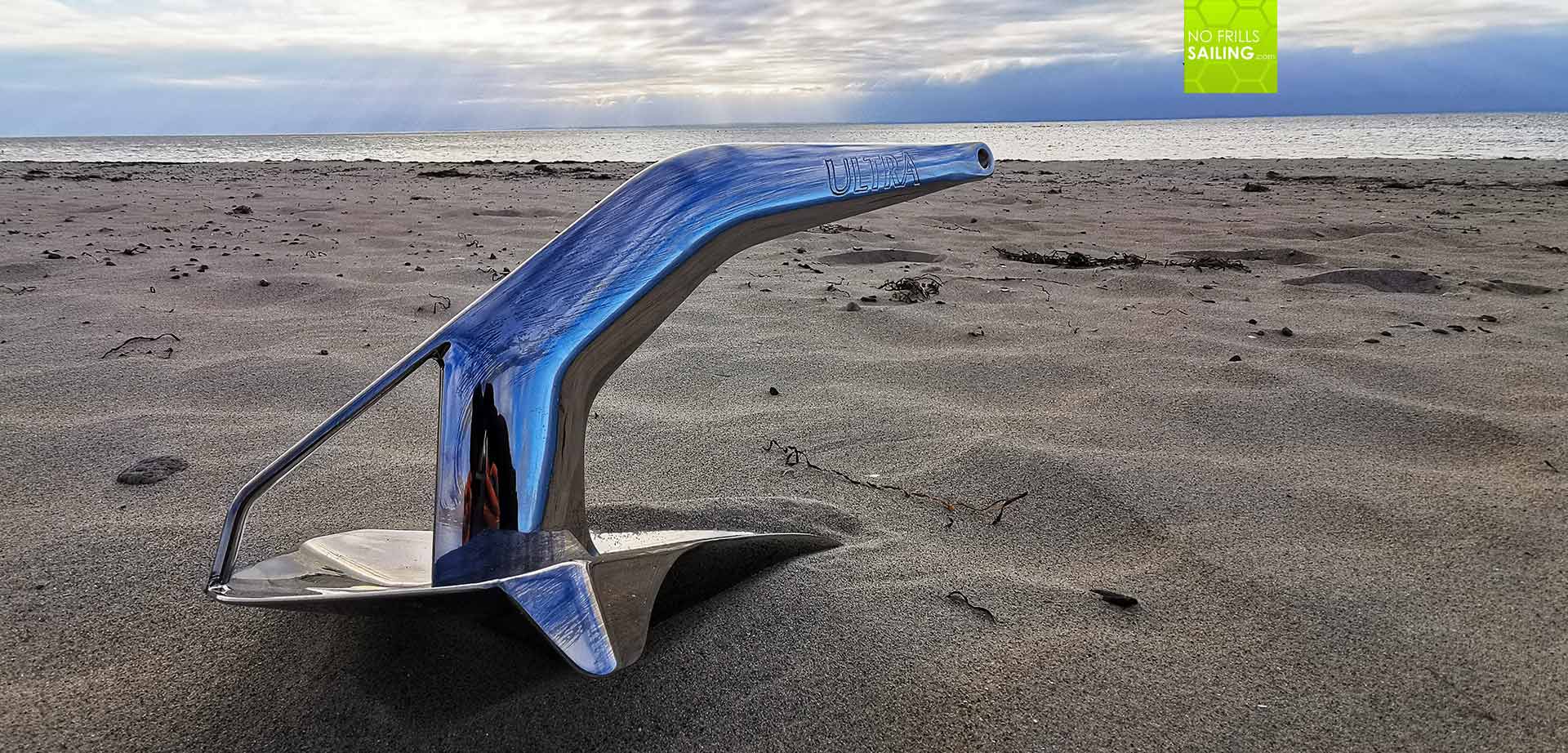
For all how don´t want to read the whole article now, here in short: I was astonished just how quickly the anchor ate itself down into the sand and held very tightly – I couldn´t pull it out even when I put my whole weight and tried as hard as I could. Also, simulating a change of wind direction or 90 degrees, the anchor broke out just to drive itself down into the sand immediately. Impressive! Now with GEKKO in the water and my kids aboard, I judged it would be the best occasion to have the first real anchor-test and here is how it went.
Setting up the anchor equipment
The day before I readied the boat and as one of the last things to prepare I unloaded the anchor and the surplus equipment onto the pontoon to have the setup cleared. When I took out the knife to rip the still packed anchor rope – I cut my fingers open and a deep wound began to bleed. Not a good start I guess … with my fingers bleeding I sported down to GEKKOs salon where the first aid kit was deposited, a few minutes later the lesions had been cleaned and taken care of. The first test for my kit as well …

Now, what do I use on GEKKO for safe anchorage? At first the 8 kg Ultra Marine anchor which is equipped with a flip swivel. Then I went for a nice 10 meter stainless steel chain which is very handy. This one should add some more weight down on the bottom of the sea and increase holding power through friction. My old swivel back from the good OLIVIA-times came to good use to connect the chain to a 30 meter polyester anchor rope.

After setting up the equipment it looked so big in relation to the small boat in a fashion that I feared the small anchor locker of the First 27 SE could be too tiny for it, but my fears proved to be untenable as it all came together just nicely: First the rope (which took me sheer endless minutes to curl up in the locker), then the chain and at last the anchor, which fits just neatly. Even my front ramming-fender still fits, which I loved the most.
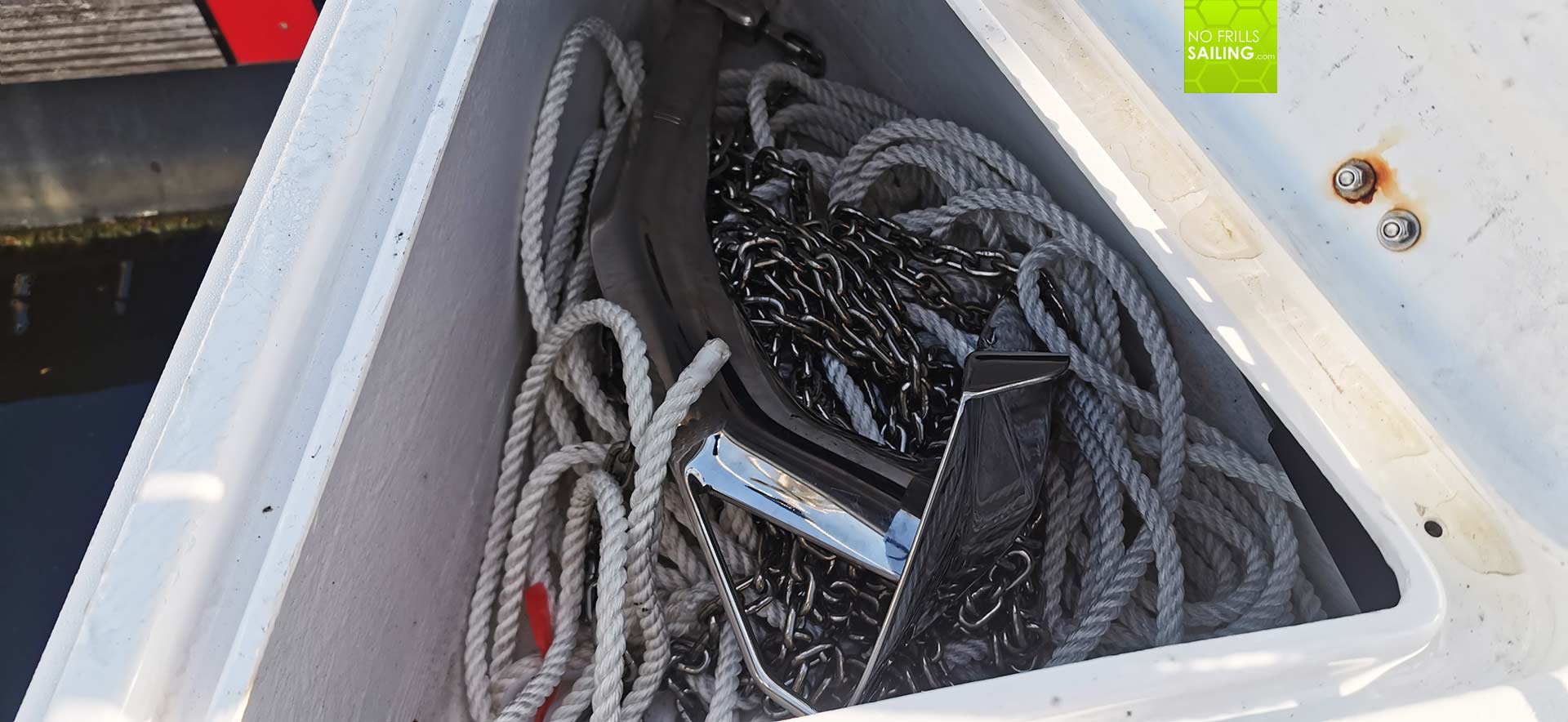
With everything set up just fine, I picked up my kids. Since I had watered the boat in Luebeck I would have to steam down the River Trave to Travemuende, a 6 mile trip, all through the wilderness of Northern Germany. I love this part of the Trave, we frequently roam about in the forests here, my kids love it. So the plan was to steam downriver for a while and drop anchor in a bay which we know as “Pirate´s Bay” from our land-explorations, have a nice luncheon, maybe take a quick bath to move on to the Baltic Sea to start sailing eventually. As said – done!
First time anchoring with Ultra Marine
After one hour of constant humming of our Torqeedo electric engine we finally reached Pirate´s Bay and my kids were excited. The conditions had been just perfect: With a persistent wind of some 10 to 14 knots it was quite a fresh breeze so that the anchor would have to show at least some holding qualities. With GEKKO we´ve had two more boats at anchor in the bay which would be just perfect to be used as bearings if the anchor would hold or not. I stopped dead in the wind, sported to the bow, took out the anchor and dropped it.
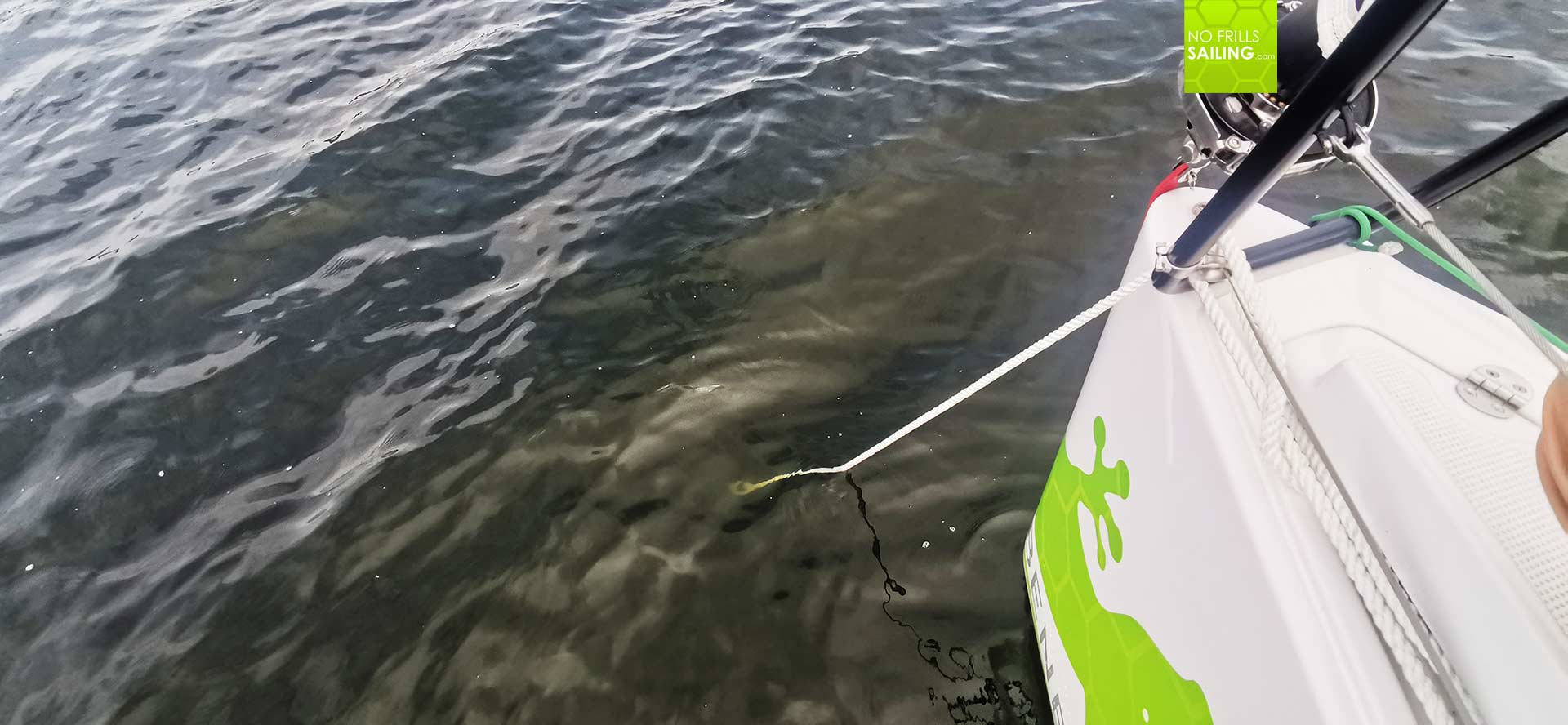
Since my boat does not have a bow roller I have to drop the anchor with bare hands while standing on the fore pulpit. This is a bit tricky as the anchor locker must be kept open to let out the chain and the rope, but I wedged my shoulders underneath the forestay to add some safe standing – it worked. I carefully let down the anchor, painstakingly avoiding any bumping of the heavy stainless steel anchor into the GRP bow of my boat. The anchor quickly disappeared in the dark waters but quickly touched ground at some 7 meters of depth. Setting to slow astern, GEKKO steamed away and I let out all the chain. I added some 6 arm lengths of rope so that all of the chain would be laying down on the bed of the sea, pulled as hard as I could and put the rope onto the fore clamp. Here we are!
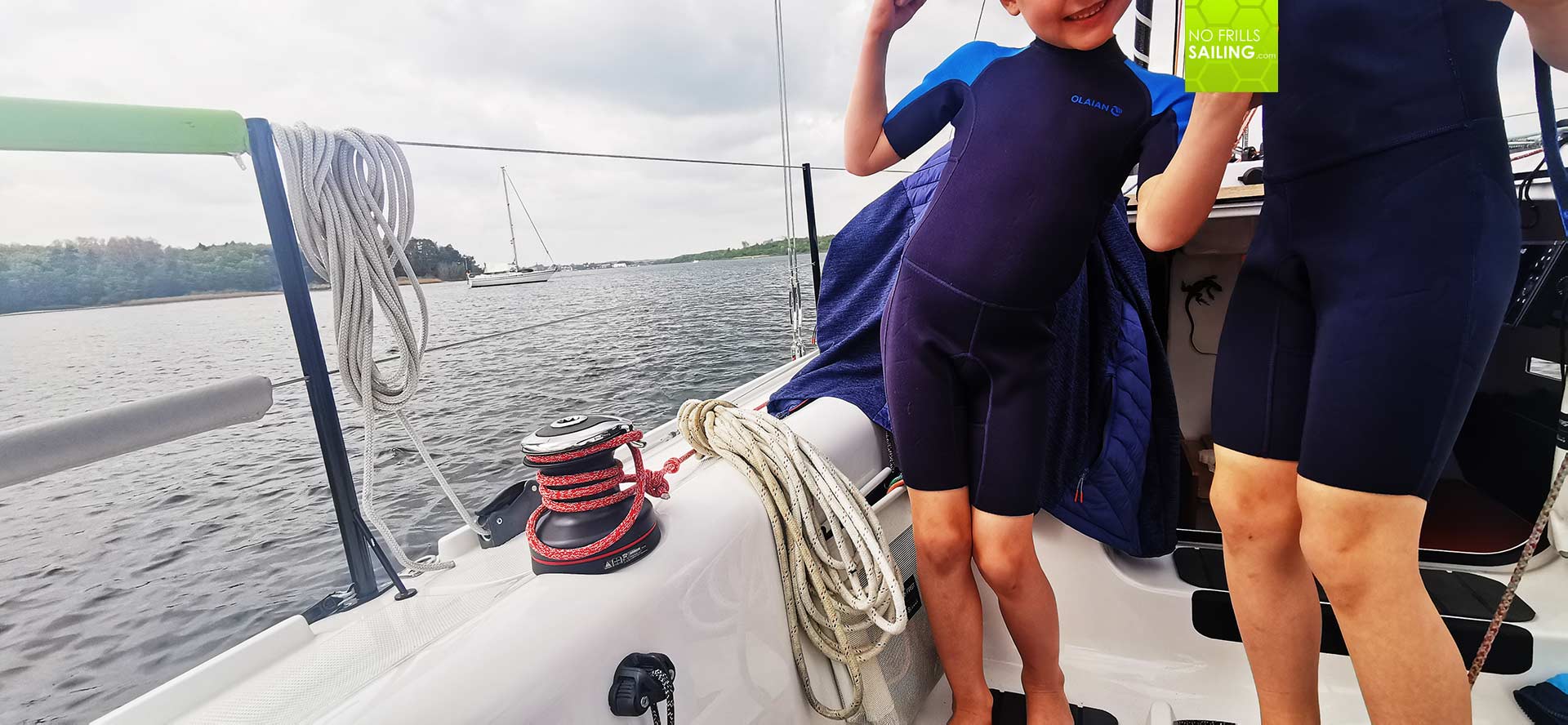
After two quite rocky gusts went through, I returned to the bow to check if the anchor was holding: By laying my hand onto the rope I tried to sense if there was any motion. Nothing. I checked the distance to three landmarks on the shore all around – frequently, now, 30 minutes and 60 minutes later and we did not move an inch. As of now I´d say: Test passed with flying colors, the anchor works and the setup seems just as right.
Is it worth it?
My kids absolutely loved it! Being able to drop the anchor at will – in combination with my swing keel – allows me to sneak my boat into shallow anchorages. Everybody who ever has spent a night at anchor, being gently swayed by a small swell, just quiet, no sounds other than those of nature, no lights and no harbour trouble will know what I mean. My kids took a quick bathing session in their neoprene-suits (as water is still very cold here in Germany) and our little luncheon at anchor bestowed an hour of pure happiness upon us.
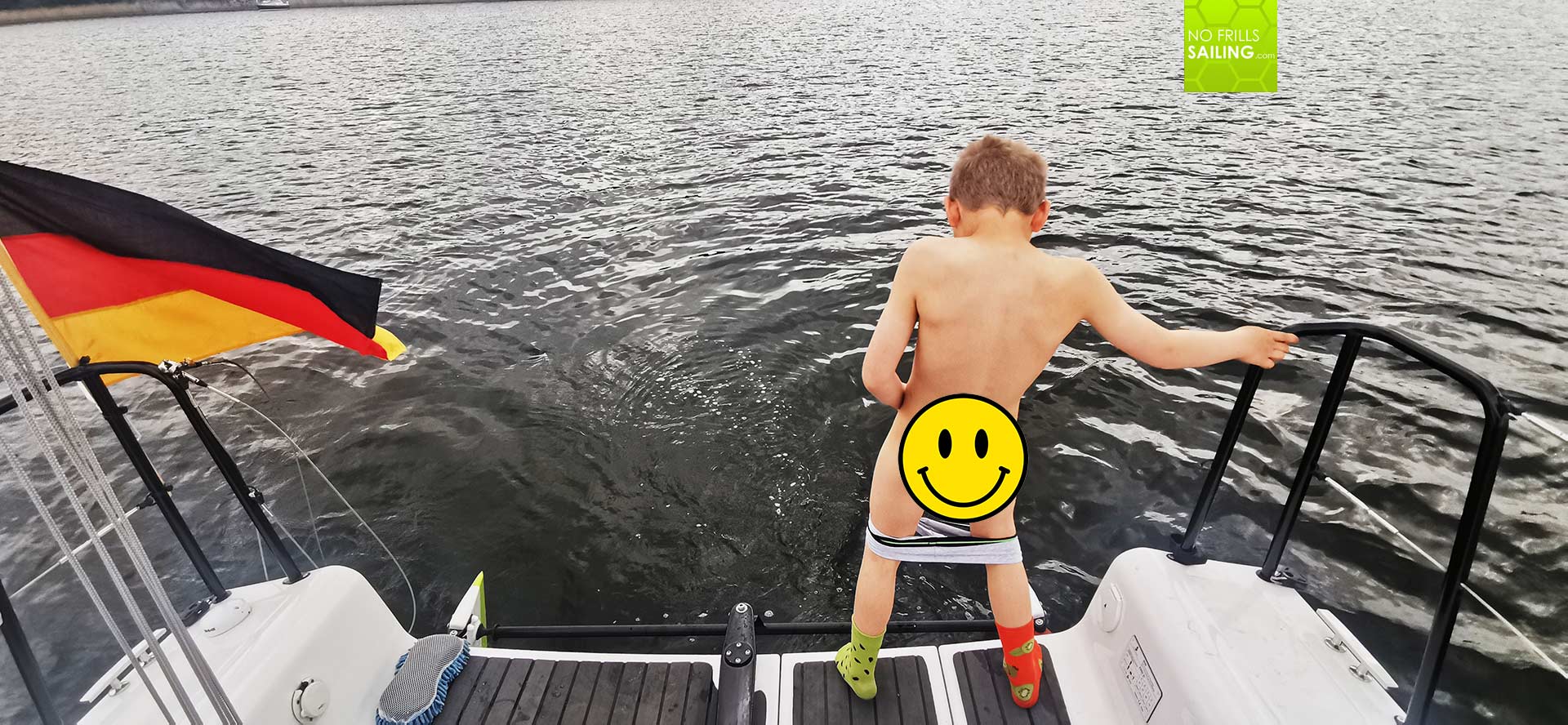
Is it worth it? Absolutely yes! I mean, I didn´t had to check emergency holding powers in a storm and I hope I will never have to do so, but I can say that my expectations have been fulfilled and I have absolute trust in this anchor. This means a lot since it takes a lot to convince me to go to sleep, trusting the safety of my boat and my family to a piece of equipment. Do I trust this one? Absolutely yes.
You might also like to read:
Dress rehearsal: Ultra Marine anchor in a dry test
Anchor chain locker re-designed and finished, parts 1 and 2
Archipelago island adventure: At anchor in Sweden
